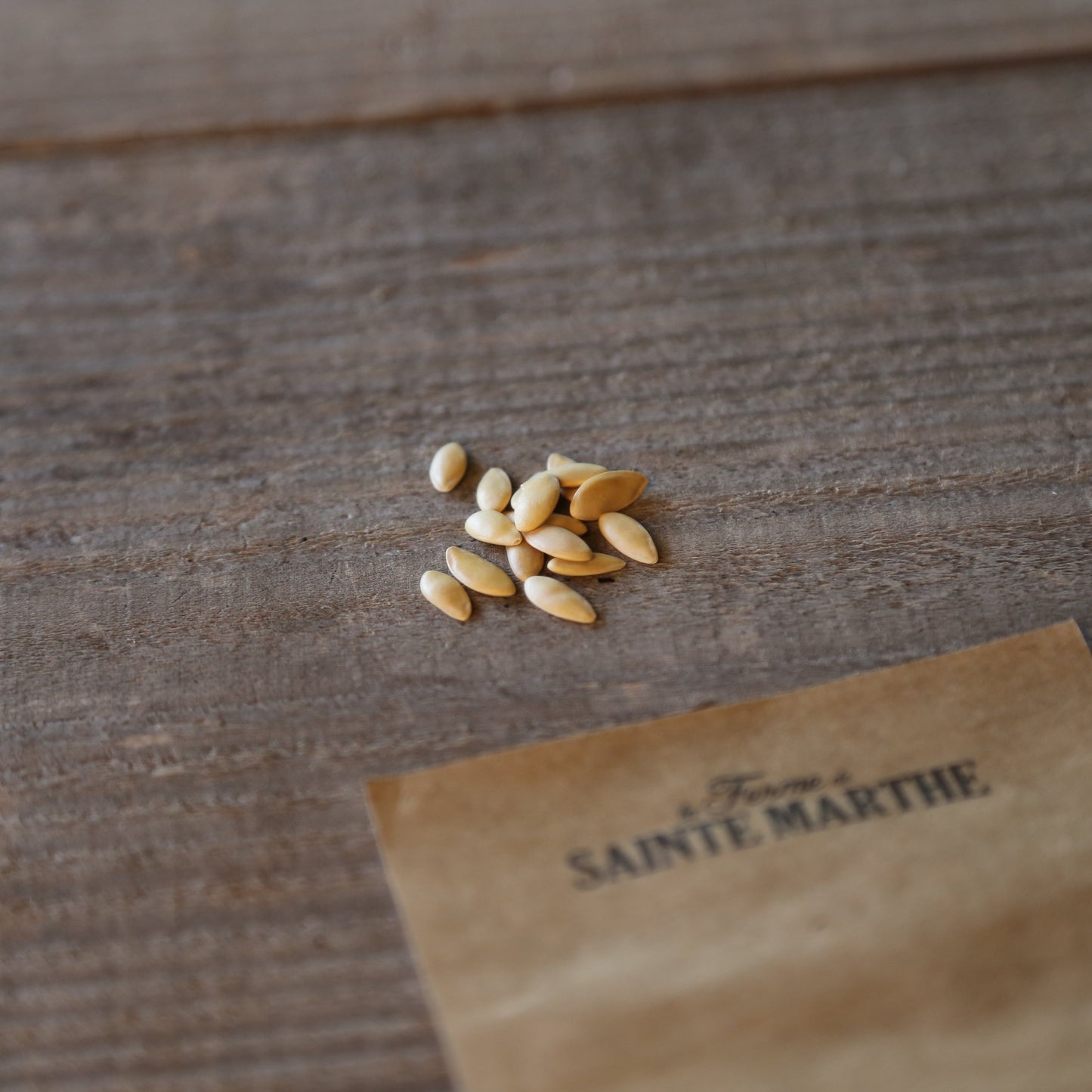GREEN CLIMBING MELON AB
Cucumis melo
The climbing green melon is an old and early variety of the embroidered type, originating from France. Its skin is dark green with marked ribs, punctuated with pale green. The green flesh of the melon is melting, juicy, and very sweet, offering an excellent flavor. Small in size (between 10 and 12 cm in diameter and weighing between 500 and 800 g), it is particularly suited to growing on a trellis , which facilitates its maintenance and harvesting.
How to successfully sow melons
Sowing melons in pots
Melons need plenty of heat (between 24 and 35°C) and light to germinate. Daytime temperatures should be within this range, without dropping below 15°C at night. Ideally, melon seeds should be sown in a warm frame or heated greenhouse in March/April, and replanted in the garden after the risk of frost has passed, i.e., mid-May.
Instructions for sowing in pots:
- Sow 2 or 3 seeds (point downwards) per pot, filled with fine seed compost , 1 cm deep.
- Water regularly to keep the soil moist, without soaking it, using a sprayer.
- Place the seedlings near a window or in a very bright location.
- As soon as the seedlings appear, their need for light becomes even more crucial. Make sure to place them in a very sunny location.
- Remove the weakest plants, keeping only the most vigorous ones.
Melon sowing in place
For residents of the south of France or regions with a Mediterranean climate, it is possible to sow directly in the ground.
Instructions for sowing in place:
- Space the seeds 80 cm to 1 m between each future melon plant.
- Place 2 to 3 seeds per pocket at a depth of 1.5 cm.
- Cover the seeds with a mixture of sifted garden soil and mature compost .
- Use a cloche or a frame to shelter seedlings during their early growth.
- Keep only the most beautiful plant per pocket.
Melon planting
Depending on the region, young melon plants can be planted in the garden between April and mid-June. For cooler areas, using a plastic tunnel at the beginning of the growing season helps promote warmth. If you don't live in the south, using a heated greenhouse is highly recommended for growing melons and watermelons.
Tips for planting:
- Space plants 80 cm to 1 m apart.
- Choose a warm, sunny location with potash- rich soil. It may be helpful to loosen the soil before planting and add a little compost.
Association with the vegetable garden
In the vegetable garden, melons grow well with most vegetables, with the exception of cucumbers and squash .
Melon cultivation
New melon varieties do not require pruning, except for topping (cutting off the head). As soon as the plant has formed 4 to 6 leaves, it is advisable to prune the main stem. This will encourage branching and fruiting.
Tips for growing:
- Water regularly, but in moderation, as excess water could reduce the taste quality of the melons.
- Do not wet the foliage when watering to avoid the appearance of powdery mildew .
- Weed regularly after planting and mulch the soil in late June-early July, when the soil is warm.
- Remove leaves that shade the fruit so that they receive maximum sunlight.
- Place wooden boards or tiles under the fruit to protect it from moisture and provide extra warmth.
Melon harvest
Melons are ready to harvest about 2 to 3 months after transplanting into the garden. You will know they are ripe when:
- Their color fades.
- The peduncle begins to detach effortlessly.
- Their scent becomes more pronounced.
- You may also notice a small crack around the stem, a sign that the fruit will soon detach.
Be careful , do not keep the melon in the refrigerator, as this will alter its aromas.
Melon diseases
Melons are susceptible to downy mildew , leaf spot, and powdery mildew. To prevent mildew infections, avoid watering the foliage late in the day, especially during hot, humid weather. At the end of the season, you can place a tile or board under each melon to protect it from moisture.
The main pests are aphids and seed flies . To avoid fly attacks, it is best to plant when temperatures are high enough to allow rapid plant growth.









